Motorola Droid 3 Review - Third Time's a Charm
by Brian Klug on July 30, 2011 12:01 AM ESTDisplay - qHD RGBW 4”
The original Droid and Droid 2 famously used high quality 3.7” IPS panels, and as a result had excellent contrast and brightness. What always struck me as being a little odd with the arrangement was that the devices used the 16:9 FWVGA (854 x 480) aspect ratio instead of WVGA’s 800x480. The difference was subtle, but as a result the Motorola Droids always did seem more rectangular than most of their other Android bretheren. Since then, qHD has become the hot new high-end Android resolution, which vindicates Motorola’s by likewise being 16:9.
Aspect ratios aside, it’s interesting to me how obvious it is that qHD is the answer to the iPhone 4’s retina display. I’ve been told that the development cycle for most of these handsets is anywhere from 12 to 18 months, and look no further than your calendar and when qHD devices have started shipping to see that in action. Whatever the reason for qHD’s emergence, it’s good to have some display innovation take place.
The Droid 3 ups the size of the primary display from the 3.7” which adorned the old Motorola Droids to 4.0”, and as already noted increases effective resolution from 854x480 to 960x540. Like the Droid X2 and other new qHD Motorola phones, the Droid 3 uses a PenTile L6W RGBW subpixel matrix to achieve effective qHD resolution. I talked about RGBW in the Droid X2 review, and what it boils down to is the inclusion of a fourth white subpixel which increases light transmittance (and thus reduces required backlight power) in a lot of use cases.
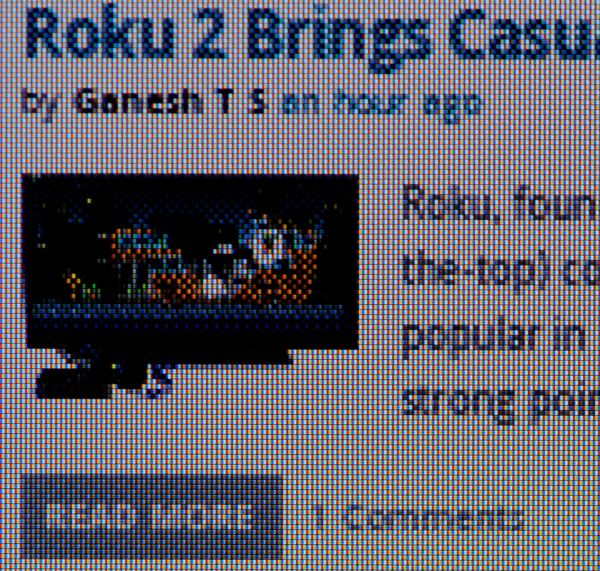
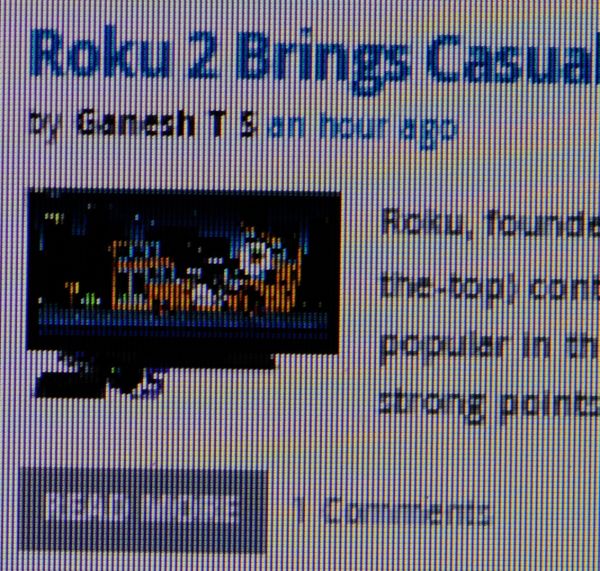
Left: Droid 3 with RGBW PenTile, Right: Droid 2 with RGB Stripe
Unlike the other RGBG PenTile which adorned AMOLED displays before Super AMOLED Plus swung around, I find RGBW much easier to stomach and completely readable when presented with black on white UIs. Colors still have visible grain, as do some UI elements, but the Droid 3’s 4” display makes this considerably less noticeable than the same resolution on the Droid X2. Only on bright colors is that extra space due to the fourth subpixel readily visible, and thanks to our color-specific visual acuity, greens are the most visible.
I immediately noticed out of the box with the Droid 3 that it wasn’t as super bright as the Droid X2, which was itself almost shockingly bright. That said, the Droid 3 is no slouch and is likewise nice and contrasty as well.
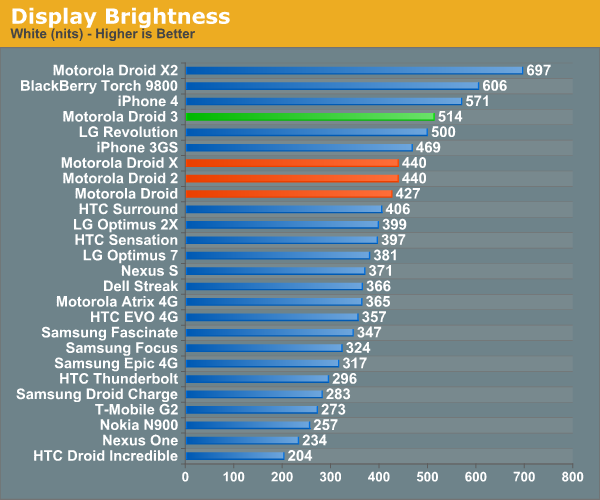
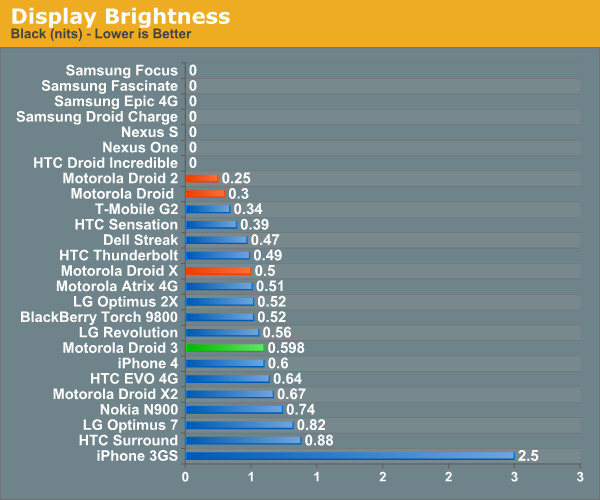

We’re still making plots of brightness (white and black), and white point at 25% brightness steps. The Droid 3’s white point tracking is slightly different from the X2’s despite also using RGBW. It ends up not being visibly blue like some of the AMOLED variants nor noticeably warm like some of the earlier Droid panels were in odd batches.

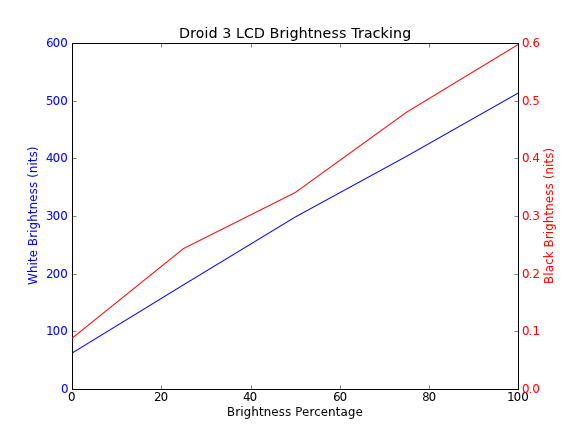
The next are of concern are viewing angles, which in my opinion the Droid 3 does very well at. I stuck the Droid 3 next to the Droid 2 and shot some pics of it at different angles. It’s surprising to me in retrospect how much color shift and contrast reduction there is in the old Droid 2 by comparison. In this regard, the Droid 3’s display is a clear step forwards.
Outdoor viewing angles are decent on the Droid 3 are pretty good but not totally perfect. RGBW helps keep brightness punchy but in my mind outdoor viewing remains an unsolved problem for just about everyone.








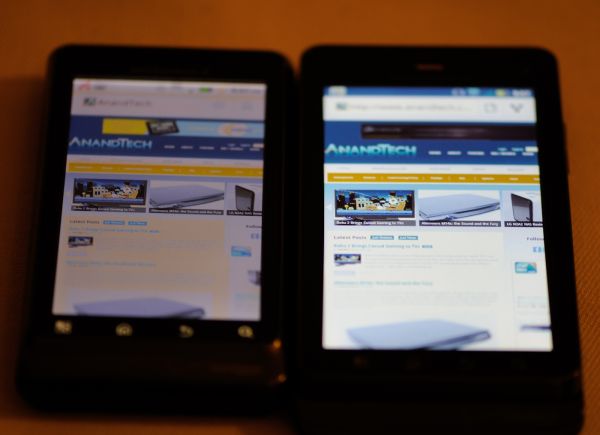
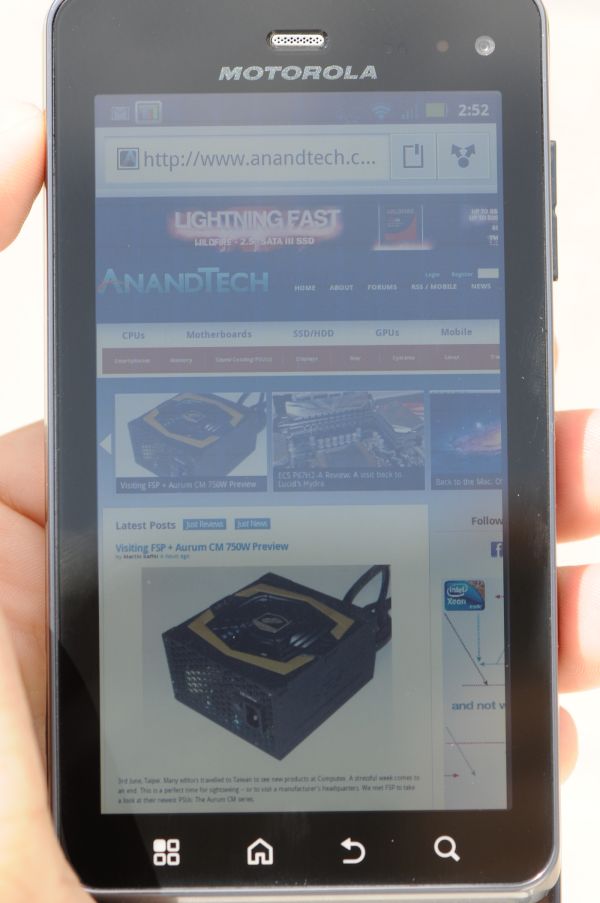








84 Comments
View All Comments
Lucian Armasu - Sunday, July 31, 2011 - link
I completely agree with you on this. Either raise the resolution for a normal LCD/AMOLED screen (RGB) or don't raise it at all if you're going to use Pentile. It makes the display worse overall.It's like you're trying to increase sharpness of the display by increasing resolution by 30%, and then you use Pentile which *drops* sharpness by 60%. The end result is negative on the sharpness of the display.
YoPete525 - Sunday, July 31, 2011 - link
Have you guys actually looked at the Droid 3 in person? Most elements on the screen still appear sharper than say on the Incredible 2, which has a relatively comparable 4-inch screen with the 800x480 resolution. You also have to realize that a higher resolution means more viewable content, such as more settings options on the same screen, or more emails in the same view. The increased detail is very noticeable on, for example, home screen icons, looking at the Droid 3 and then a phone with the traditional 800x480 makes icons on the smaller resolution screen appear comically large.Solid colors, especially the green (which is in the battery icon), do look fuzzy, as well as a combination of lines on certain backgrounds, and colored text. But at least give the screen a chance in person before you write it off. In terms of overall screen sharpness, you're right in that the RGBW Pentile matrix isn't ideal, but it isn't as bad as you make it out to be.
snowblind64 - Sunday, July 31, 2011 - link
Let's not forget there are benefits to a RGBW pentile screen. Battery drain is consistently well under 10% on my Droid 3 thanks to that extra white sub-pixel.themossie - Sunday, July 31, 2011 - link
For some, it really is that bad.I used it in person, spent a couple off hours in the shop playing with it. Compared to the Droid 1, on the Droid 3 I have to read text at a greater font display size / zoom level (the characters have to be bigger on screen) and as a result can fit less content on the screen than on the Droid 1.
Best comparison I can make: it feels like you are running an LCD screen at a very uncomplimentary non-native resolution. Try running a 1080p screen at 900p, it's painful to most any power user - you can still read and do work, but everything is fuzzy and hurts the eyes. Some people aren't bothered by this, others get headaches.
For UI elements, the screen is acceptable; for reading this becomes a problem.
I'm glad (and jealous) the Droid 3 screen works for you :-) I want a new slider that beats my OG Droid!
RavnosCC - Monday, August 1, 2011 - link
Agreed! I played w/the phone side by side with my D1 on all my favorite sites, reading the same content... trying to find a comparable zoom level on the D3 that didn't make the text look horrible was near impossible on most of the sites I frequent. I think Moto needs to seriously rethink the idea that increasing specs while effectively lowering quality will become the future :( The trade-offs aren't worth it, imho.relativityboy - Thursday, August 4, 2011 - link
As a posessor of the D3 I can say my D1's screen looks much better.Brian Klug - Sunday, July 31, 2011 - link
So you have to keep in mind that the photo actually is a 100% crop that I supplied to just show the differences in the subpixel matrix between RGBW and RGB.I've been pretty critical of PenTile RGBG in the past, and admittedly RGBW still isn't as desirable as straight up RGB, but it definitely is a way to emulate higher equivalent resolution. The other RGBW advantage is of course the reduction in power (just keep the W subpixel in the on position when displaying white) and thus requiring a less powerful backlight.
Again, I'd definitely prefer a true qHD 960x540 display like what HTC has on the Sensation/EVO 3D, but this isn't too bad compared to how RGBG looked on the previous generation of AMOLED displays, if nothing else because the vast majority of webpages render with sharp black edges properly.
-Brian
Lucian Armasu - Sunday, July 31, 2011 - link
It's because of the Pentile Matrix. It makes the screen fuzzier. I wish manufacturers would stop using it. It's not a trade-off I'm willing to make over whatever benefits Pentile brings.hwarrior - Saturday, July 30, 2011 - link
Too bad Droid 3 is Verizon linked.http://www.engadget.com/2011/07/18/motorola-xt860-...
jjj - Saturday, July 30, 2011 - link
Motorola will be using 2 LTE chips in it's 5 LTE devices planned to be released this year (Xoom, Bionic,1 more phone and 2 more tablets).One of the chips is developed by Motorola and the other one ... no clue really but Motorola might not want to kill battery life by using Qualcomm so maybe ST-E or Icera.